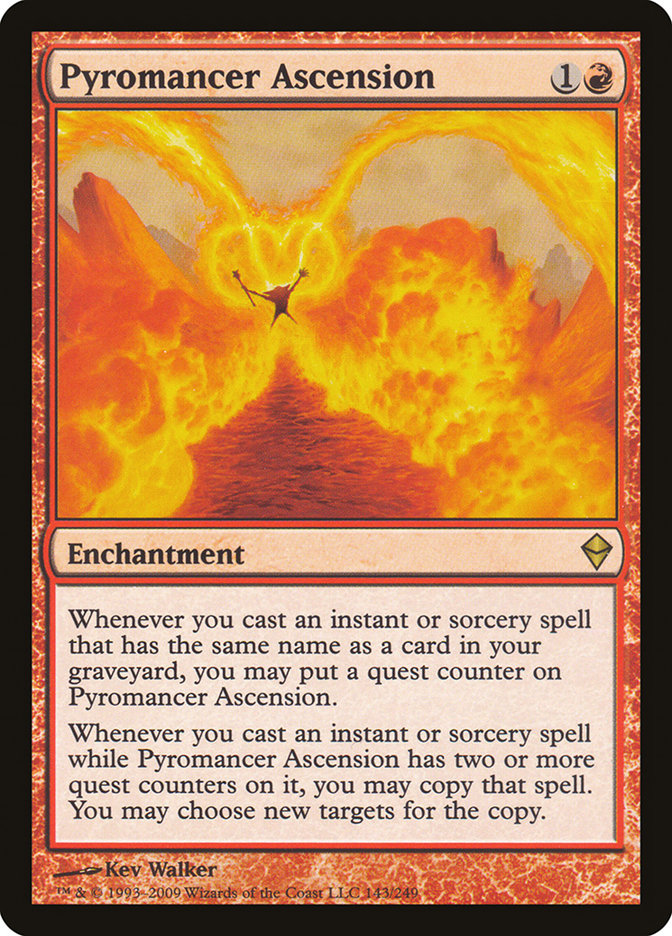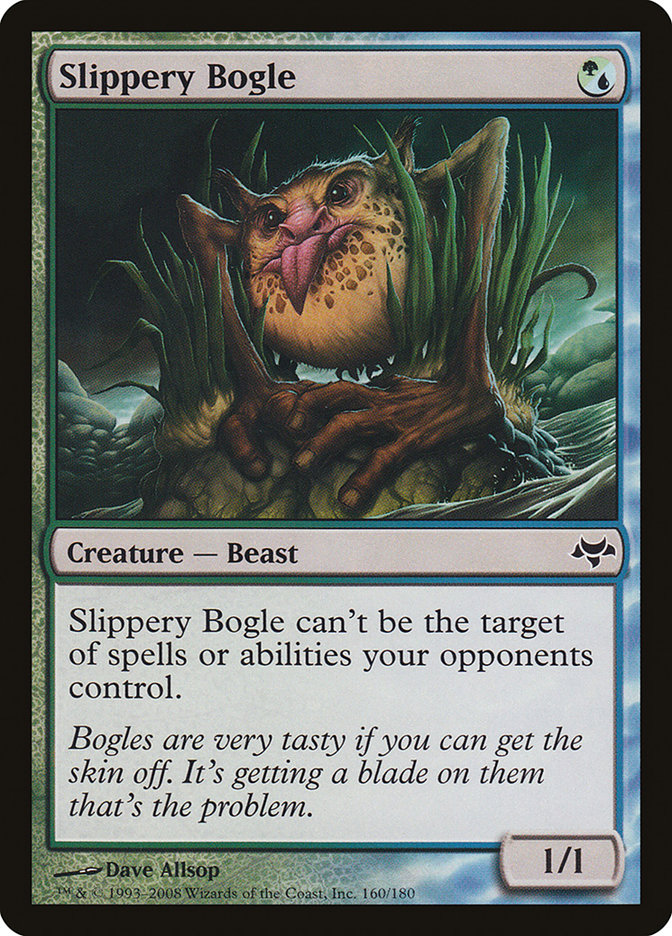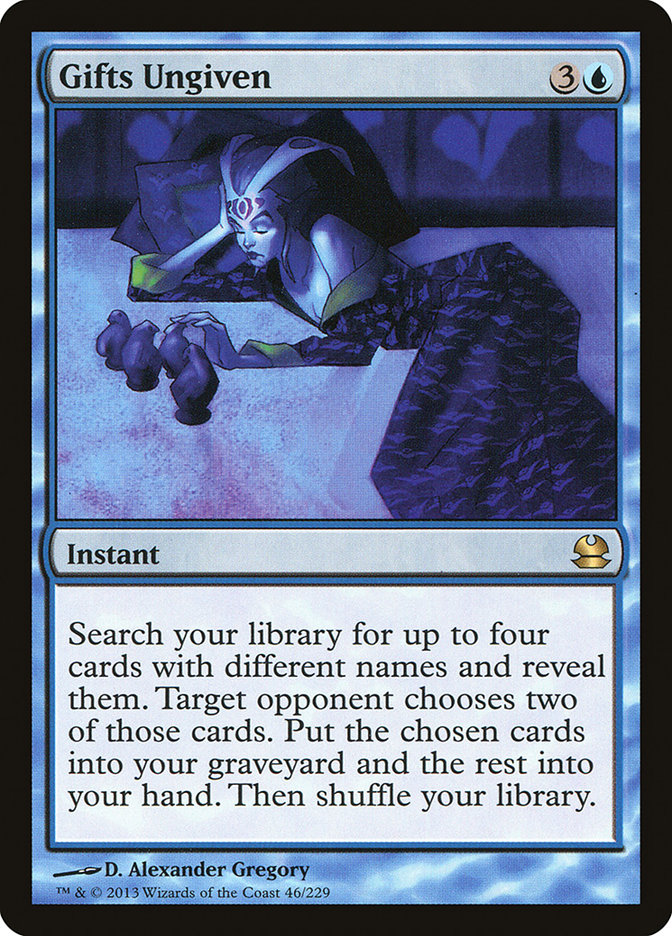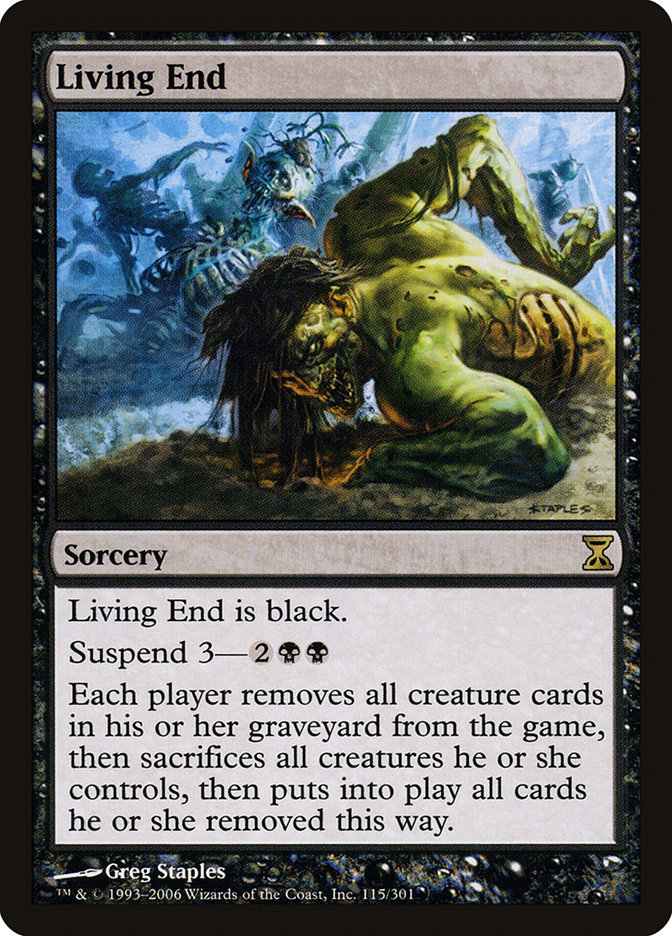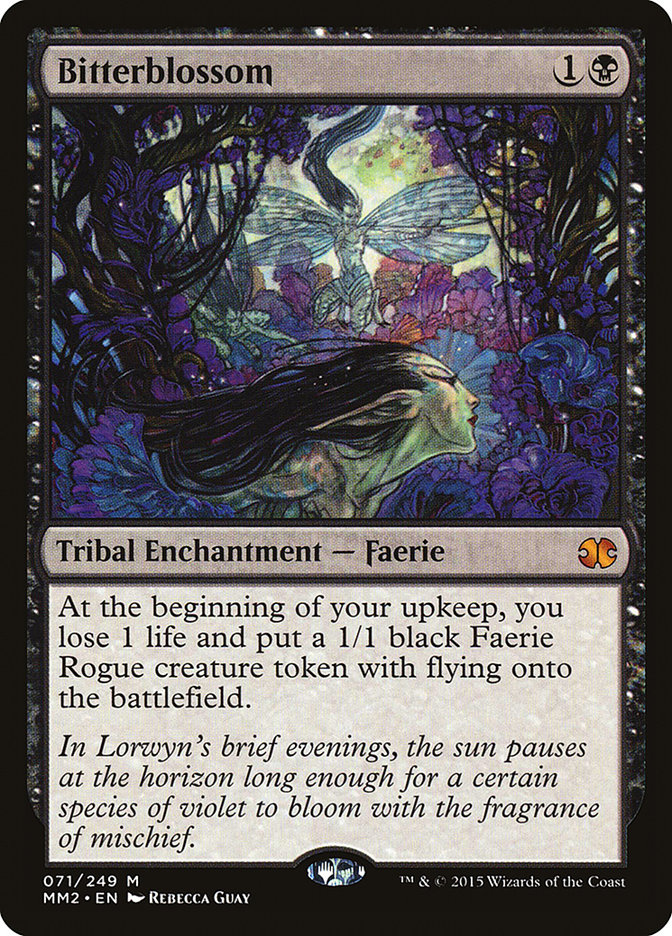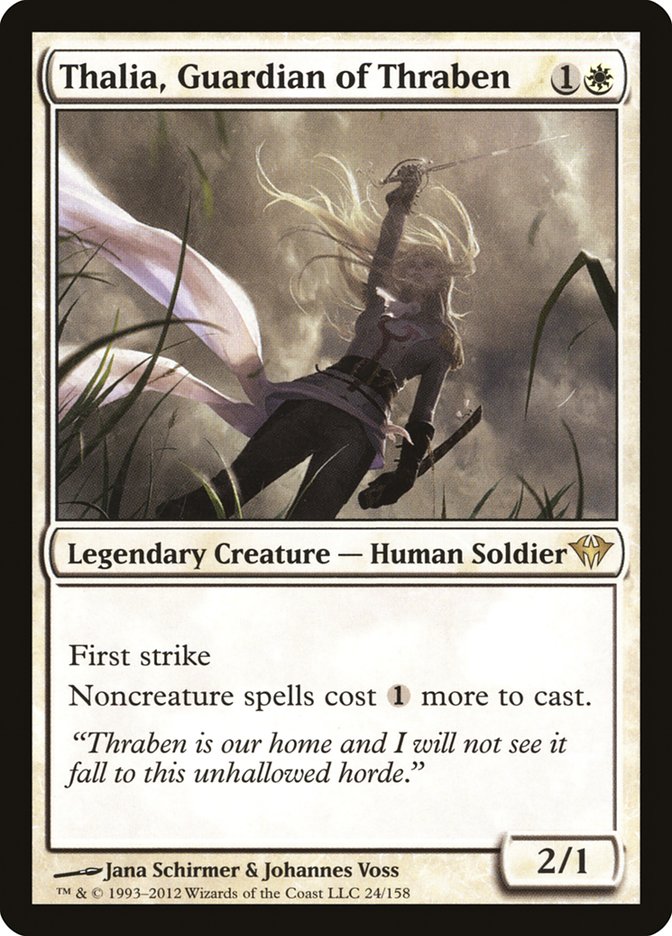It’s that time again folks. We’re just days away from the Season Two Invitational, and I am excited. The air around me is electric as I continue to
scramble for cards, figuring out what to decks to play in each format, going over sideboard strategies, and all the rest. For me, Invitationals are an
occasion! Not only do old friends from around the country converge for three straight days, but we get to play Magic against a lot of great players for
$50,000.
This time around, we’ve got Standard and Modern, instead of the usual Legacy. This is the first time that the Invitational has featured Modern, and I am
quite happy to see it and be a part of it. Modern is a very popular format with a large following, and it is only growing. With the release of Modern Masters 2015, I can only assume that it will continue to grow as more staples are put into circulation.
Last week
, I covered two archetypes that I thought would be the most popular at the Season Two Invitational, but that doesn’t quite give you the bigger picture.
Since Modern has such a large card pool, there are a plethora of decks to choose from. Whether you’re playing in the event or watching at home, there will
be a lot of different people playing a lot of different decks. It should be rather exciting, to say the least.
Many of the regular players on the Open Series Leaderboard aren’t exactly well-versed in Modern, meaning that they are truly the “wild cards” in the
tournament. And with so many decks to choose from, it will be a fun guessing game to see what everyone comes up with. We’ve had a few months’ worth of
results since the Modern Open in Baltimore, but I expect a lot of people are going to debut their pet projects. Being so close to Grand Prix Charlotte,
which also features Modern, I can only assume that many of the game’s great minds are working hard to break it for this two-week stretch of high profile
Modern tournaments.
Setting the Stage
At the Season Two Invitational, you’re going to see a lot of different decks over the weekend, but don’t be surprised if you see a lot of the same decks
performing well in capable hands. Modern, as a format, has a high skill ceiling, meaning that the better player will likely win the match if they have come
prepared.
Here are the decks you should expect to see a lot of.
Creatures (14)
Lands (22)
Spells (24)

Don’t think for a minute that Splinter Twin won’t play a big role in the tournament. For one, many of the better players in the event will be playing some
form of Splinter Twin. It has a powerful win condition that punished people for tapping out, much like Faeries in Standard years ago. If you’ve ever played
against a Mistbind Clique in your life, then you probably know about how it feels to play against Splinter Twin.
Sometimes, there just isn’t a right decision.
But Splinter Twin isn’t the only aspect of the deck. Older versions from years ago relied heavily on the combo to win games, but the newer iterations
attack from multiple angles. They’re less consistent on the combo spectrum, but they are much trickier to play against. No longer can you sit on your
Abrupt Decay forever and expect it to beat them. They may try to play the tempo game with Tarmogoyf, or try to win the long game with Tasigur. And even if
they’re just playing the more traditional form of U/R splashing Ancient Grudge out of the sideboard, you can expect a lot of Vendilion Cliques to peck away
at you.
Creatures (14)
- 1 Grim Lavamancer
- 4 Dark Confidant
- 4 Tarmogoyf
- 1 Kitchen Finks
- 2 Scavenging Ooze
- 1 Olivia Voldaren
- 1 Tasigur, the Golden Fang
Planeswalkers (3)
Lands (25)
Spells (18)

This archetype, classically known as “The Rock,” features the format’s most powerful disruptive elements, creatures, and removal spells. What they lack in
card advantage, they more than make up for with incremental advantage and overall card power. Thoughtseize and Inquisition of Kozilek are powerful forms of
interaction in such a diverse format, giving these decks a way to interact with all the powerful combos that could potentially show up.
Tarmogoyf and Scavenging Ooze are efficient threats that can end the game quickly. While Scavenging Ooze takes a bit more work to get going than Tarmogoyf,
it adds a different kind of disruption that the deck doesn’t really have access to. Graveyards are a powerful resource in Modern with Delve and Snapcaster
Mage both seeing a lot of play. Eating creatures out of the graveyard can also break up combos involving Kitchen Finks and the like. Many decks in Modern
use their graveyard, which is what makes Scavenging Ooze so powerful.
Dark Confidant is on the rise again, fueled by the disruptive elements of discard effects. Taking away your opponent’s removal spell is devastating when
you follow up with a Dark Confidant. And when they don’t have a removal spell, Dark Confidant can very easily take over the game. Even if it just nets you
a few cards, there is so little raw card advantage in Modern, and every little bit counts.
Expect many of these decks to splash red for Lightning Bolt, Terminate, and a few other things. Others will splash white instead, opting for more resilient
threats. Siege Rhino and Lingering Souls are phenomenal in the right metagame, though Path to Exile is a bit lackluster in comparison to Lightning Bolt.
Creatures (14)
Lands (19)
Spells (27)
- 4 Lightning Bolt
- 4 Lava Spike
- 2 Lightning Helix
- 4 Rift Bolt
- 2 Shard Volley
- 3 Searing Blaze
- 4 Boros Charm
- 4 Atarka's Command
Sideboard

Like it or not, Burn is one of the best decks in the Modern format. With such a high density of cheap burn spells that deal three or more damage, it isn’t
that hard to finish off the opponent even when they’ve stabilized. In essence, Burn is a combo deck with a bit of an aggro touch. All of your cards are
building together to finish off the opponent, though you don’t have to cast them in any particular sequence. At times, it feels like “Storm for dummies,”
but anyone who has played Burn before knows that it is not an easy deck to pilot.
But you may also notice that Modern gives players access to some of the most brutal hate for Burn decks imaginable. Kor Firewalker and Feed the Clan are
likely the most popular options at the moment, but some decks also just goldfish at a higher rate. Burn is more consistent than most combo decks, as their
cards all do effectively the same stuff, and Goblin Guide can rack up damage rather quickly against an opponent who isn’t trying to kill or block it.
While Burn hasn’t been as popular in Modern as of late, I wouldn’t be surprised to see it make a comeback at the Season Two Invitational. It was one of the
most-played decks at Pro Tour Fate Reforged just a few months ago and had a decent win rate against the field. I expect that trend to pick back up sometime
in the near future.
Creatures (14)
Lands (17)
Spells (29)

Delver decks are likely the most diverse archetype in Modern, as there are many different avenues you could take. Above is a Temur Delver deck that won the
Premier IQ in Worcester just a few weeks ago.
Even now, people are coming up with new and interesting variations on existing archetypes. Disrupting Shoal isn’t a card we’ve seen a lot of (outside of
the manic ramblings of Travis Woo), but could be one of the hidden gems in the format. Alongside a constant source of card advantage, like Curiosity or
Ninja of the Deep Hours, Disrupting Shoal could effectively be Force of Will in Modern.
While Delver decks are usually a bit more conventional than this version, the real point here is that it has limitless customization options. If you want
to go more removal heavy, you could splash black. If you want to be more aggressive, you could pair it up with Monastery Swiftspear and more burn spells.
But one thing is for sure, Delver will be paired with Lightning Bolt in Modern. The card is too efficient, both for creature removal and just killing the
opponent. When combined with Snapcaster Mage, it can do a lot of damage for a very small mana investment.
Creatures (5)
Planeswalkers (6)
Lands (20)
Spells (29)
- 3 Pyroclasm
- 4 Oblivion Stone
- 4 Sylvan Scrying
- 4 Chromatic Sphere
- 4 Chromatic Star
- 2 Relic of Progenitus
- 4 Expedition Map
- 4 Ancient Stirrings
Sideboard

While Tron hasn’t been all that popular over the last year, it has gone through a bit of a resurgence in the last month. With it winning the Modern Week on
Standard Super League, as well as taking a few Top 8 slots in various Premier IQs, G/R Tron is back with a bit of a bite. Ugin, the Spirit Dragon is the
newest addition to the deck, giving you more expensive, colorless planeswalkers that can close the game on their own. Wurmcoil Engine being a phenomenal
threat against B/G/X decks might also be a reason as to why G/R Tron is making a comeback. With so many decks with Liliana of the Veil cropping up, G/R
Tron feels like a great choice.
But the major problem with G/R Tron is that it suffers from a lot of the same hate cards as the rest of the ramp decks in Modern. Blood Moon and Fulminator
Mage are both problematic, but you can fight through them. It just might not be fast enough. G/R Tron is also lacking when it comes to interacting with
most combo decks. Splinter Twin, in particular, is a pretty bad matchup for G/R Tron, and one of the more popular archetypes in Modern.
But if B/G/X decks continue to rise in popularity, causing Splinter Twin to fall, G/R Tron could find the perfect time and place to win either of the
upcoming Modern tournaments.
Breaking the Mold
Modern is so much more than what we see. As a community, it feels like we’ve only scratched the surface of what decks there are to offer. As the format
grows in both popularity and size with each new set, new archetypes spring to life.
With the release of Khans of Tarkir and the Delve mechanic, we saw a great shift in the format. With the banning of the two powerful card draw
spells, Treasure Cruise and Dig Through Time, we have regained a sort of equilibrium. But other delve cards continue to shine thanks to the many ways to
grow your graveyard.
Outside of delve, we’ve had a dead archetype revived: Melira Pod is now Abzan Company.
Creatures (29)
- 4 Birds of Paradise
- 3 Eternal Witness
- 1 Wall of Roots
- 4 Kitchen Finks
- 1 Murderous Redcap
- 3 Noble Hierarch
- 1 Linvala, Keeper of Silence
- 3 Viscera Seer
- 3 Spellskite
- 2 Melira, Sylvok Outcast
- 1 Scavenging Ooze
- 1 Fiend Hunter
- 2 Anafenza, Kin-Tree Spirit
Lands (22)
Spells (9)

While I’m not sure if this is the best that we can do with Collected Company, I think that the sheer fact that one card was able to bring back an archetype
after Birthing Pod was banned is a true testament to how powerful this card can be. We’ve only begun experimenting with it, and I think it is safe to say
that none of us have found the ceiling for how good it can be.
If you’ve yet to encounter Collected Company hitting an Eternal Witness, then thank your lucky stars. It is quite a powerful interaction, and one that is
great against a deck trying to eat away all your resources (like Jund or Abzan). BBD is pushing the envelope when it comes to the combo element, which is
probably a solid idea for an undefined Modern metagame. I would be more comfortable knowing I had the ability to combo my opponent more consistently,
though it may become less necessary as the format develops. We could see a move towards a more value-based version featuring hits like Voice of Resurgence.
I wouldn’t even be surprised if we ended up finding a deck that looks like the old versions of Abzan (Junk) Aristocrats from a while back.
But this isn’t the only archetype that Collected Company has given new life to.
Creatures (33)
- 4 Llanowar Elves
- 1 Eternal Witness
- 1 Essence Warden
- 4 Heritage Druid
- 4 Nettle Sentinel
- 4 Elvish Visionary
- 4 Elvish Archdruid
- 1 Fauna Shaman
- 3 Ezuri, Renegade Leader
- 1 Spellskite
- 1 Scavenging Ooze
- 4 Elvish Mystic
- 1 Reclamation Sage
Lands (19)
Spells (8)

So many little bells and whistles in this deck! With Collected Company and Chord of Calling at your disposal, there are so many possibilities. A singleton
Fauna Shaman. An Essence Warden to counter a Splinter Twin combo, or just gain a lot of life against Burn. You even have a Spellskite to protect your Elf
Lords from Lightning Bolt!
The trick to this deck is that you don’t actually want to tutor up those cards very often. Chord of Calling and Collected Company act more as additional
Elf Lords, but having the option to find silver bullets in specific situations is quite awesome. This deck took the Magic Online Championship by storm, and
was the deck choice of the eventual winner. I haven’t seen people talk about this deck too much as of late, but it has been steadily growing in popularity
on Magic Online over the last month.
It is a powerful strategy, and one you better be prepared for.
But it doesn’t take some new card to break the mold. Modern is a vast ocean, and we’ve yet to scrape the bottom. And occasionally, we see a great, white
beast rear its ugly head from those waters, though it tends to submerge when the deed is done.
Those decks that pop up from time to time and dominate don’t usually last all that long. They tend to have pretty big weaknesses that are easy to exploit.
The trick is figuring out which of those strategies is being ignored in the current metagame. For Pro Tour Fate Reforged, that deck was Burn, though it
seems strong enough to stay above water, at least for the time being. The same could be said for Amulet Bloom, another deck with exploitable weaknesses
that continues to put up reasonable finishes.
But where are the denizens? Where are the monsters that we’ve all grown to fear in the back of our minds? They are hiding, deep beneath the surface,
waiting for the perfect time to strike.
Each of these decks brings about powerful images in my head. I’ve lost to all of these cards plenty of times across multiple formats, and all it takes is
one soft spot in the metagame for one of them to make a comeback. And these are only the top of the list. I could write an entire article about how much I
hate Slippery Bogle, or hexproof as a mechanic for that matter.
Every now and then, we get to see one of these cards flourish in their respective archetypes. They aren’t always powerful enough to cross over into new
decks, because most of them demand a certain dedication to their cause. But if you’re never felt the dread of a Turn 1 Slippery Bogle, I envy you. It might
not be as frightening as a Turn 2 Griselbrand, but it still scares the bejeezus out of me.
Great Expectations
I’m not going to lie to you. I will almost assuredly be playing Temur Twin at the Season Two Invitational this weekend. It’s what I know, and if I can
stress anything to those that play Modern, it is “stick to what you know.” Familiarity with a deck can make all the difference. I’ve seen people battle
with their brews time and time again, but they know how to pilot them proficiently, and they go far. Farther than they might go with Jund or Splinter Twin
or a flavor of the week.
But where I am sticking to my guns, I have high expectations for the brewers. It would make me very happy if the next two weeks were full of odd, powerful
decks kicking the crap out of the format. At the very least, give me a little Griselbrand action. Daddy needs his fix!
I’ve seen a lot of people writing and talking about the Modern format as of late, and it makes me happy. I hope that it continues, even after all the dust
has settled at Grand Prix Charlotte. If Modern keeps getting the attention and support it deserves, it could be the first time in a long time that Wizards
had an “in-between” format thrive. It would be great for the game and help keep value in our collections. I know that I don’t mind finding mini gold mines
in my old boxes of draft chaff.



